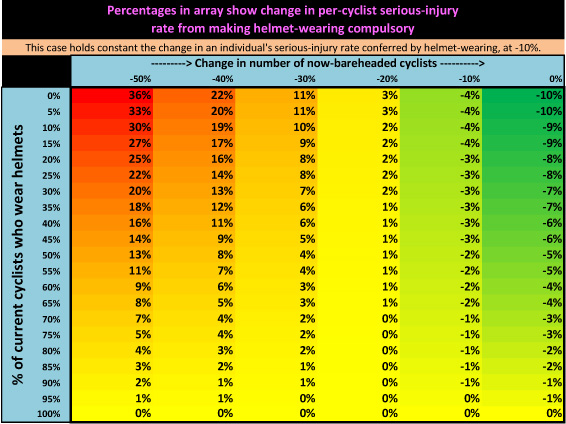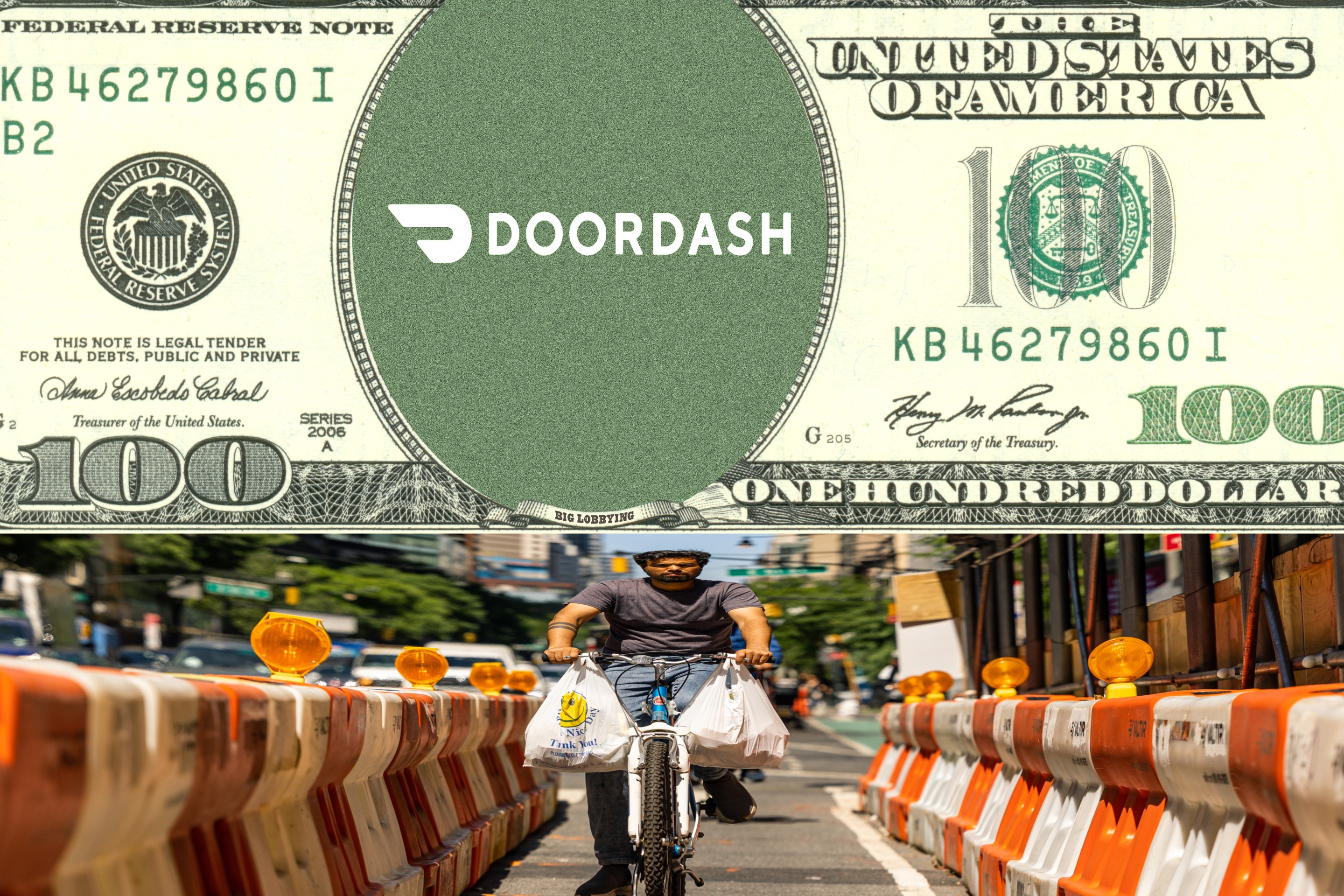The great thing about arguments favoring compulsory bike helmet laws is that they tend to stay on topic instead of degenerating into fruitless bickering over cyclists’ interactions with pedestrians, bike riders’ claim to the streets, and other tired subjects.

The bad things about such arguments are many. Here are three:
- They ignore the possibility that some non-helmet wearers will cycle less or will refrain from taking up cycling in the first place rather than use a helmet or risk being cited for riding bareheaded.
- They ignore safety-in-numbers, or, in this case, its inverse, by which having fewer cyclists on the road tends to raise per-cyclist crash rates with motor vehicles, as cyclists’ diminished presence on the road leads drivers to treat them as aberrations rather than as part of traffic.
- They overstate helmets’ protective value in reducing injury severity in the event of crashes.
Pro-helmet-law arguments are problematic beyond these three points, too. Arguments favoring helmet laws tend to reinforce cycling’s marginal status by isolating cyclists as a special case and passing over holistic approaches that could improve road safety for all. And of course helmet law promoters like Brooklyn Council Member David Greenfield rarely bother to note the vast health dividends that cycling confers by integrating physical activity into daily life.
Still, points 1-3 above do have a silver lining: their effects can be quantified — or at least varied over reasonable ranges — allowing us to find the conditions under which prohibiting helmet-less cycling might reduce cyclists’ injury rates... or not. This simple spreadsheet model [XLS] does that:
Each percentage in the box denotes the change in the likelihood that an individual cyclist will suffer a serious-injury crash some day because helmet-wearing has been made a condition for riding a bike. Positive percentages, denoted by red, indicate increased rates of serious-injury crashing, while negative percentages, denoted by green, indicate lower rates. The factors that the model varies are (i) the extent to which un-helmeted cyclists will cut back on riding — the steepest curtailments are arranged to the left — and (ii) the extent to which current cycling is done by helmeted riders.
A good place to enter the matrix is at the far right, which corresponds to zero drop-off in cycling despite the helmet law. This column is a helmet-law advocate’s dream, with the law merely making helmet holdouts do what they should have done all along, sans unintended consequences like less cycling. In this scenario, and for the adjacent column which assumes a modest 10 percent drop in cycling among the unhelmeted, the decline in cycling is so slight that the safety-in-numbers curve has little bite. Under these conditions, a helmet law will deliver on its promise of reduced per-cyclist rates of serious injury.
As the assumed rate of attrition among non-helmet wearers moves into the 20 percent range, however, shown in the middle columns, the mathematical signs turn positive, indicating increased risk. This is ominous in light of 20-40 percent reductions in the total amount of cycling reported in cities and states in Australia, the only country with widespread compulsory helmet legislation in which changes in bicycle use have been carefully scrutinized.
Turning to New York City: If we assume that cycling here is now split equally between helmeted and unhelmeted riders, and if we posit that a compulsory helmet law would cause half of the latter group to stop cycling, the table indicates that cyclists’ serious-injury rates would rise by 13 percent. Numerically, that’s because the withdrawal of safety-in-numbers overwhelms the benefit from converting bareheaded cyclists to helmet use. And while a 50 percent shrinkage in cycling by the bareheaded group may be an extreme assumption, the prevalence of yellow and red in the matrix indicates that under most combinations of assumptions, a helmet law will subject cyclists to greater levels of danger, not less.
Why wouldn’t the post-legislation uptake of helmets trump safety-in-numbers? Mostly because helmets simply aren’t very effective in reducing injury damage to cyclists who are struck by cars. The most authoritative epidemiological analysis of helmet efficacy to date, a study of 3,390 cyclist injuries reported from seven Seattle-area hospital emergency departments and two county medical examiners' offices, summarized in Injury Prevention in 1997, found that helmet-wearing conferred only a 10 percent reduction in severe injury rates; and even this small differential fell below the threshold of statistical significance. What makes this analysis especially noteworthy is that it effectively invalidated the authors’ premature and incomplete conclusion in their decade-earlier study that helmets were spectacularly effective in reducing the chances of head and brain injuries; it was that "finding," which has reverberated around the medical echo chamber ever since, that catapulted helmet promotion to the fore of bicycle "safety."
The matrix shown here assumes the 10 percent reduction in severe-injury frequencies reported in the 1997 Injury Prevention paper. (You can test other reduction rate assumptions by downloading the spreadsheet and running it with your own figures.) Yet you’ll miss helmet laws’ other “whammy”: the loss to health among those who quit cycling or never take it up. Nor does the model capture the myriad of opportunities for improving traffic safety for all participants by addressing operators of motor vehicles, who bring nearly all of the danger to the road environment while violating vehicle codes repeatedly and with impunity.
I deliberately framed this analysis narrowly to demonstrate that, under most plausible sets of assumptions, compulsory helmet laws fail on their own terms, by raising, not reducing, the likelihood that cyclists will suffer serious-injury accidents. Let's use this finding to help bury helmet legislation once and for all, and encourage public officials and health professionals to join livable streets advocates in programs that will increase active transportation and decrease injury risks at the same time.






